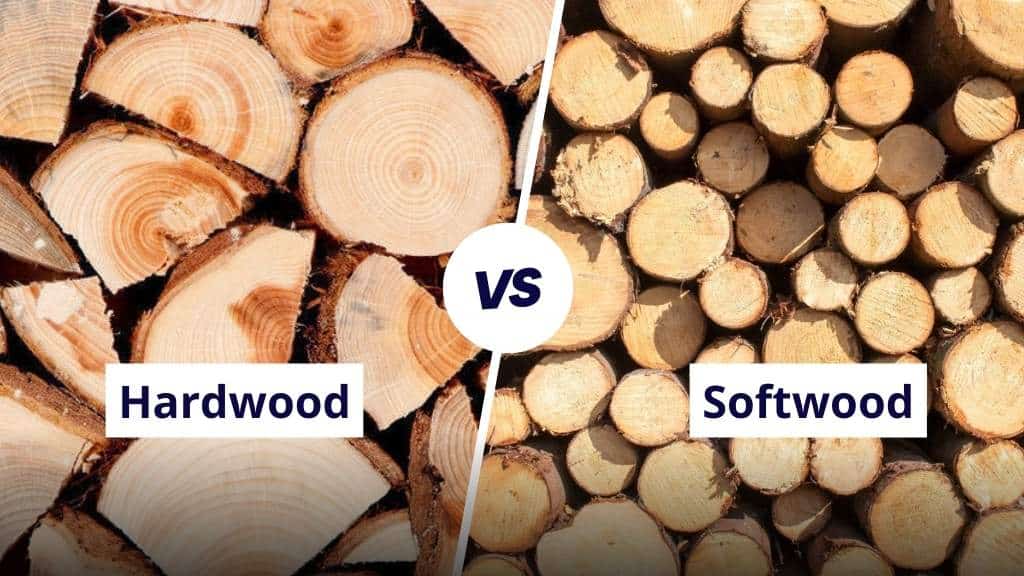
Wood is a versatile material widely used in construction, furniture, and crafting, but not all wood is the same. Hardwood and softwood are two primary categories, each with distinct characteristics that affect their usage and durability.
Choosing the wrong type can lead to inefficiency or reduced lifespan of a project. Understanding the key differences between hardwood and softwood is crucial for selecting the right material. In this article, we’ll break down their properties, applications, and advantages to help you make an informed decision
8 Key Differences Between Hardwood Vs Softwood
HARDWOOD | SOFTWOOD |
|
|
|
2. Uses: Hardwoods are more frequently used in long-lasting construction, decks, flooring, and high-quality furniture. |
2. Uses: Approximately 80% of all timber is made of softwood. Softwoods are used in a variety of products, including furniture, medium-density fiberboard (MDF), paper, Christmas trees, and construction materials like windows and doors. |
|
3. Alder, balsa, beech, hickory, mahogany, maple, oak, teak, and walnut are a few examples of hardwood trees. |
3. Cedar, Douglas fir, juniper, pine, redwood, spruce, and yew are a few examples of softwood trees. |
|
4. The majority of hardwoods are denser than the majority of softwoods. |
4. A majority of softwoods are less dense than a majority of hardwoods. |
|
5. Generally speaking, hardwood is more costly than softwood. 6. Hardwood grows more slowly than softwood. |
5. Usually, softwood is less costly than hardwood. 6. The growing rate of softwood is greater. |
|
7. Fall and winter are the seasons when hardwoods gradually lose their leaves. |
7. Softwoods typically maintain their needles all year round. |
|
8. Fire resistance is more. |
8. Fire resistance is poor. |
What is the Difference Between Hardwoods & Softwoods; Microscopic Structure
Hardwoods and softwoods have various physical characteristics from one another. Hardwoods normally have wide leaves, whereas softwoods often have needles and cones, and this characteristic is usually noticeable both at the surface and microscopic levels.
Hardwoods feature vessel components, which are visible as pores under a microscope, that carry water throughout the wood. Medullary rays and tracheids transfer water and create sap in softwoods. Softwoods have no pores that can be seen under a microscope because tracheids lack pores.
Hardwoods’ pronounced grain, which differs greatly from the light grain of softwood, is mostly a result of the pores present in these materials.
Understand the Uses of Hardwood and Softwood
Hardwoods and softwoods frequently serve the same functions, with the type of wood and its density being more important considerations.
However, in general, softwoods are less expensive and more convenient to deal with than hardwoods. As a result, they account for the majority of the wood that is utilized globally, with softwoods making up around 80% of all timber.
Given that hardwoods are significantly more widespread than softwoods worldwide, this is remarkable. Softwoods are used in a variety of products, including furniture, medium-density fiberboard (MDF), paper, Christmas trees, and construction materials like windows and doors. One of the most often utilized softwoods is pine.
Hardwoods have the advantage of being generally thicker than softwoods, which means many of them will survive longer than softwoods while being more expensive and occasionally more difficult to deal with. Because of this, hardwoods are more frequently used in long-lasting construction, high-quality furniture, decks, and flooring.






